Plant-based living is all in the family with the Campbells. By now, most of you know about The China Study, a monumental research-based nutrition book written by T. Colin Campbell and his son, Thomas Campbell. But more recently, one of his other sons piloted a film to broaden the reach of their family’s plant-based message. Nelson Campbell made his mark with the documentary, PlantPure Nation, and his wife, Kim Campbell, whipped up a companion title, The PlantPure Nation Cookbook. Their initial works were so successful that Kim is back with a second PlantPure cookbook, and she was kind enough to share this Vegan Pad Thai recipe as a sample.
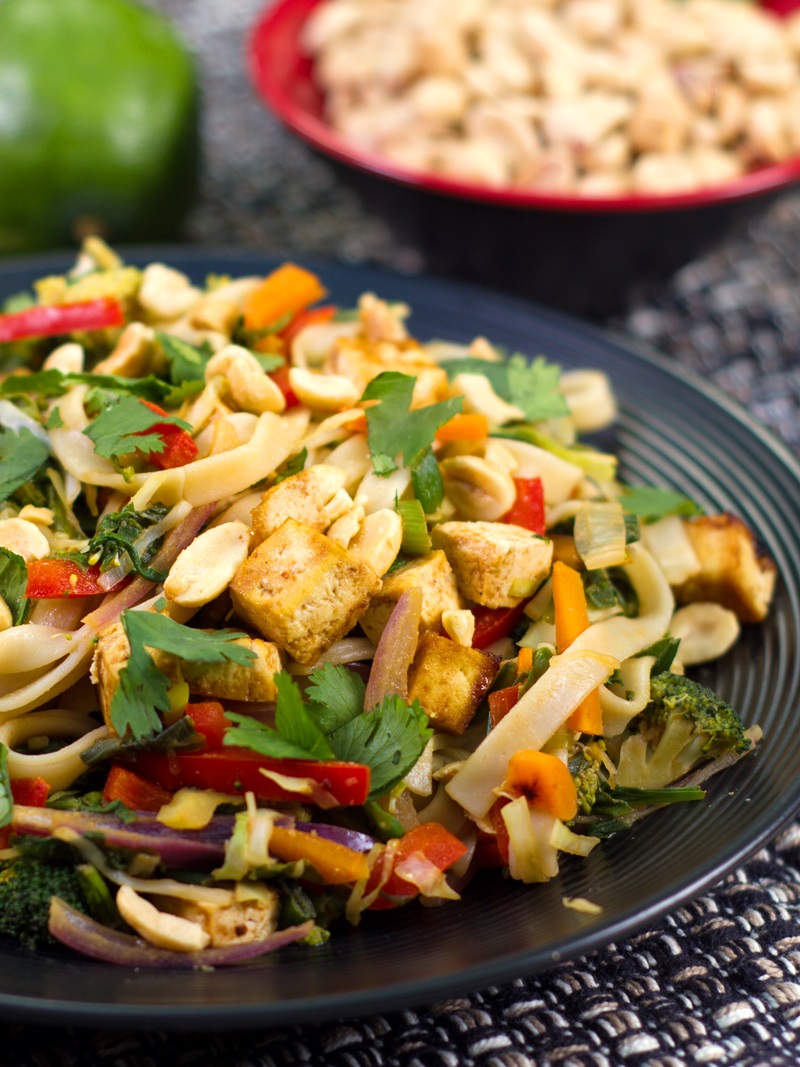
According to the subtitle, The PlantPure Kitchen contains “130 Mouthwatering, Whole Food Recipes and Tips for a Plant-Based Life”. But this isn’t just another vegan cookbook. Kim puts a heavy emphasis on consuming as many pure foods as possible, in their “natural” state.
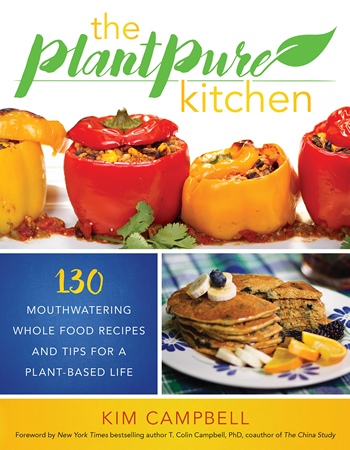 This means that many ingredients we may take for granted as being plant-based, like oil, are almost non-existent in Kim’s recipes. Her creations are also low-sodium, low-sugar, and focus on whole grains, whole soy, nuts, seeds, and beans for nutritional balance. Most of the recipes in The PlantPure Kitchen are also gluten-free, but you will find a smattering of options that contain whole wheat or spelt flour.
This means that many ingredients we may take for granted as being plant-based, like oil, are almost non-existent in Kim’s recipes. Her creations are also low-sodium, low-sugar, and focus on whole grains, whole soy, nuts, seeds, and beans for nutritional balance. Most of the recipes in The PlantPure Kitchen are also gluten-free, but you will find a smattering of options that contain whole wheat or spelt flour.
Nelson and I raised three kids and led busy lives, and we fell short in the diet department more times than I care to admit … It is these memories that remind me of the importance of humility. I feel strongly that a judgmental, extremist attitude can be an impediment to building a plant-based world.
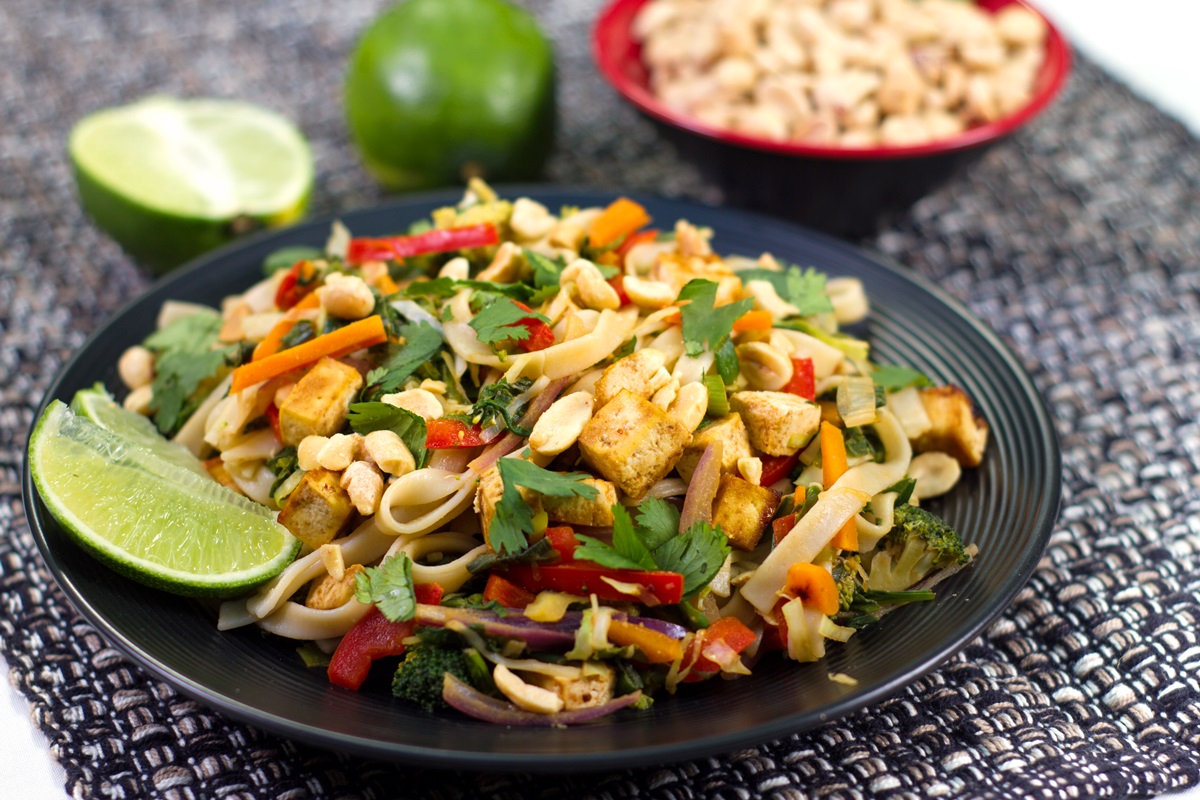
Special Diet Notes: Vegan Pad Thai
By ingredients, this recipe is dairy-free / non-dairy, egg-free, optionally gluten-free, optionally peanut-free, tree nut-free, vegan, plant-based, and vegetarian.
- 2 garlic cloves, peeled
- 1 teaspoon grated fresh ginger
- ¼ cup water
- 3 tablespoons low-sodium tamari (wheat-free / gluten-free, if needed)
- 2 tablespoons maple syrup
- 1 tablespoon rice vinegar
- 1 tablespoon tahini
- 1 tablespoon lime juice
- 1 teaspoon tamarind paste
- 1 teaspoon sriracha
- 2 teaspoons non-GMO cornstarch
- 6 ounces extra-firm tofu
- 6 to 8 ounces brown rice noodles
- 1 medium carrot, peeled and julienned
- 1 red bell pepper, seeded and sliced
- ½ red onion, sliced
- 3 cups chopped broccoli florets
- 1 cup shredded cabbage
- 2 cups chopped spinach
- 1 cup fresh mung bean sprouts
- 4 to 6 green onions, chopped
- 3 to 5 garlic cloves, minced
- ½ cup chopped peanuts (omit for peanut-free)
- ½ cup chopped fresh cilantro
- 1 lime, cut into wedges (optional)
- Preheat the oven to 400°F. Line a baking sheet with parchment paper.
- Combine all the sauce ingredients in a blender and blend until smooth and creamy.
- Cut the tofu into 1-inch cubes and arrange them in a single layer on the prepared baking sheet. Brush the tofu thoroughly with the sauce (reserve the remaining sauce for the vegetables). Bake until golden, 15 to 20 minutes.
- While the tofu is baking, cook the rice noodles according to the package instructions. Drain and set aside.
- In a nonstick skillet over medium-high heat, sauté the carrot, bell pepper, red onion, broccoli, cabbage, spinach, sprouts, green onions, and garlic in a small amount of water until the broccoli is bright and tender, about 5 to 8 minutes. Add the reserved sauce and continue cooking until the sauce thickens, about 3 minutes.
- In a large serving bowl, toss the pasta, tofu, and vegetables together. Garnish with the peanuts and cilantro and serve with the lime wedges, if desired.
Tamarind paste (a sticky sour fruit paste) can be found in the Asian section of most large supermarkets; Whole Foods Market carries this product as well. But if you can’t find it, you can substitute 1 pitted date.
This Vegan Pad Thai recipe was reprinted with permissions from The PlantPure Kitchen: 130 Mouthwatering, Whole Food Recipes and Tips for a Plant-Based Life Paperback by Kim Campbell. The photo is by Colin Campbell.
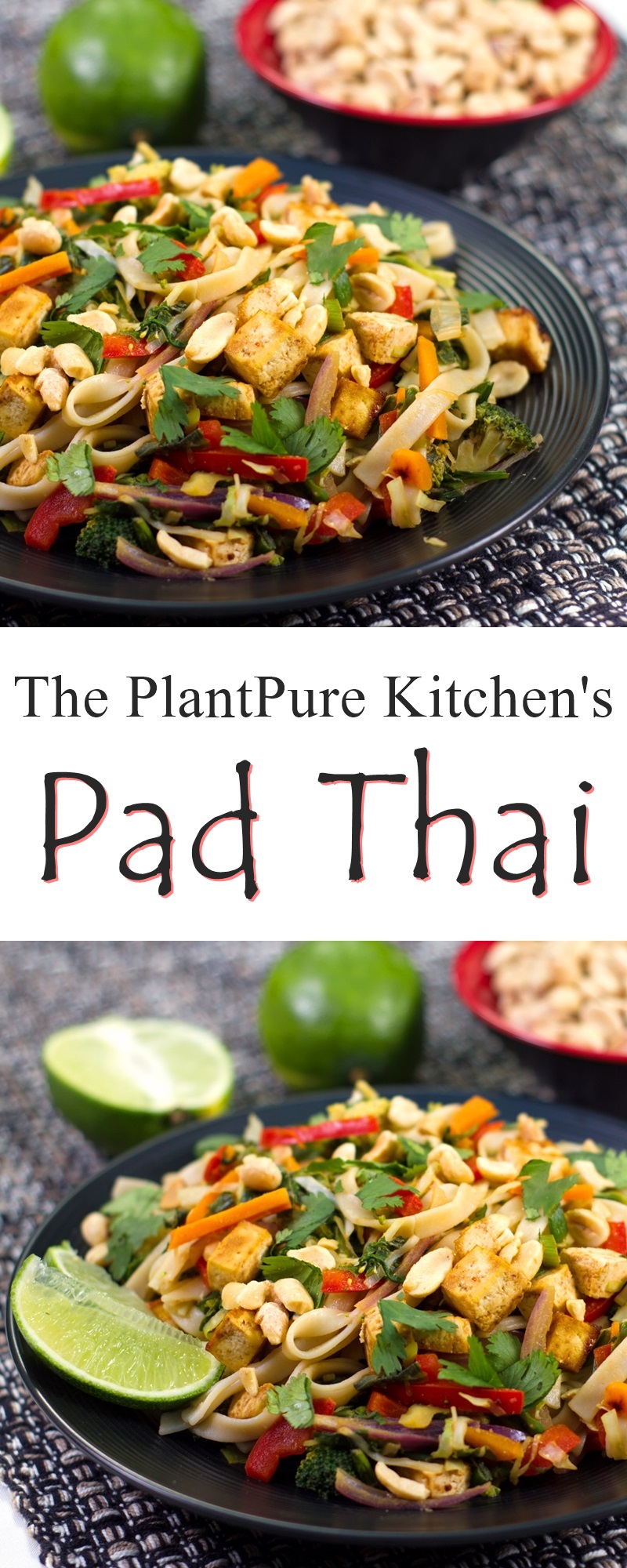

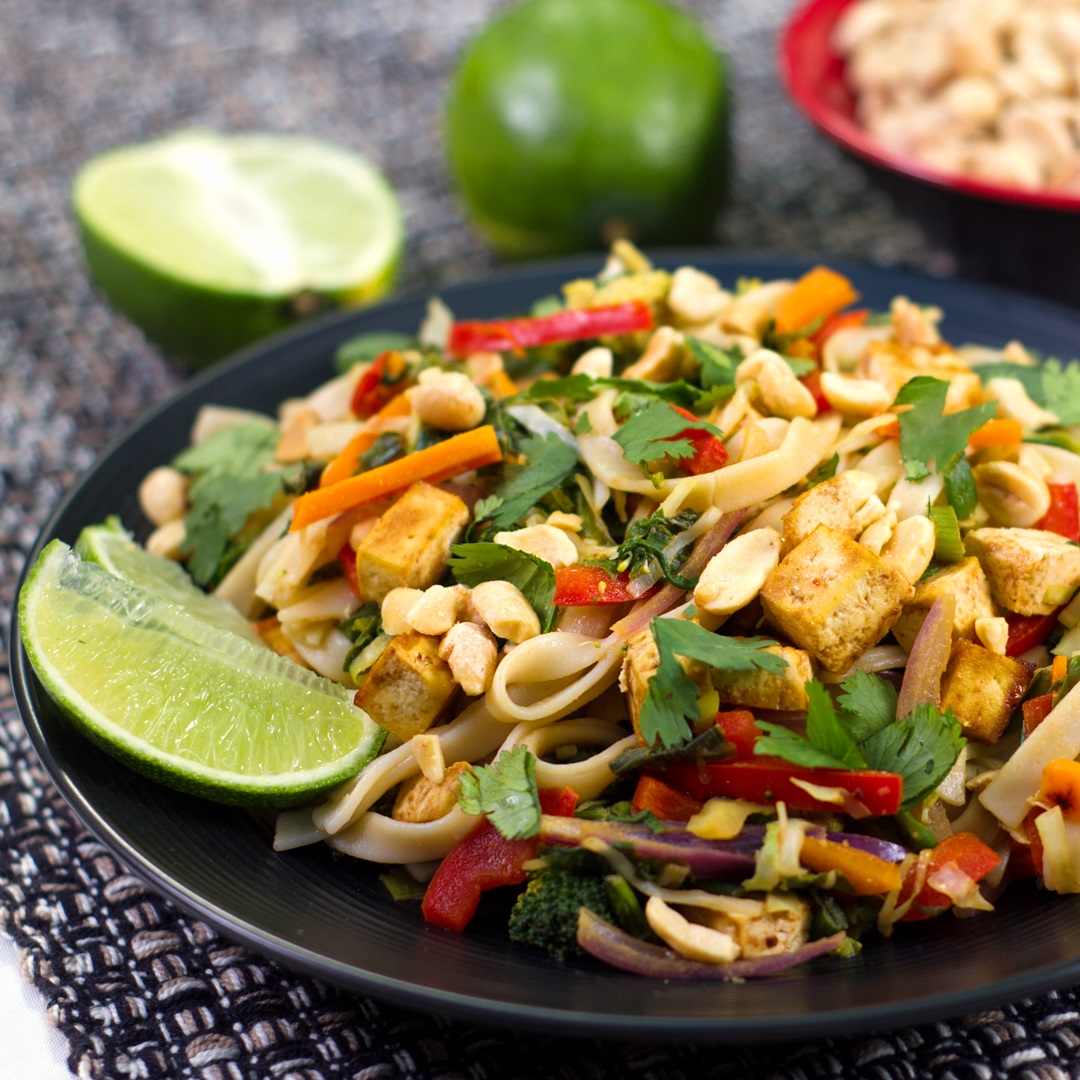
21 Comments
The BEST Pad Thai I have ever made or tasted. especially delicious cause it is vegan!! Deffinatly adding it o my “do again” list!
That’s wonderful! And thank you for the feedback Debbie.
Pingback: 50 Amazing Vegan Asian Recipes - Vegan Heaven
Pingback: Homemade Vegan Cheez Recipe from the PlantPure Kitchen
Pingback: Vegan Blue Cheese Dressing Recipe: A 5-Minute Dairy-Free Substitute!
LOVE the quote you included from the book. It’s exactly how I feel too. And this Pad Thai looks incredible!
That inclusive attitude always come through with you Jenn!
That looks completely delicious. So colorful! Definitely need to try.
I am curious where one would find a non-stick skillet that isn’t Teflon? I gave them up 15 yrs ago for healthier pans; stainless steel, cast iron. I’m shocked to see them used…
Oh yes, there are loads of them! Ceramic is big. I’ve been using GreenPan for a couple of years and like it -> http://amzn.to/2pzer3s
The recipes in PlantPure Kitchen, like this one, are oil-free, which is why they use non-stick.
Thanks for the sneak peak inside The PlantPure Kitchen cookbook! Great to hear most recipes are gluten free! This Vegan Pad Thai is a gorgeous meal!
Yes, it really is just a few recipes that aren’t.
This looks amazing!! I love some pad thai.
This Vegan Pad Thai looks so filling and delicious! Love Thai food! Can’t wait to try this!
What a beautiful recipe! I’m a big fan of Pad Thai and use the powdered peanut butter in it! Need to try adding tofu next time!
Pad Thai is a favorite and this has to be one of the best ones I’ve seen! I wish this was at home waiting for me after the girls soccer because it would hit the spot right now.
Yummy Pad Thai! This version sounds excellent!
This looks delicious! Love the crunch that chopped peanuts give to pad thai!
Pad Thai is one of my faves! I love this vegan version and will have to check out that book.
Yeah love this dish! I have ordered it many times at our Whole Foods bar, but never tried making it at home, which I need to do. So adding it to the list
I’m so jealous of your Whole Foods! Ours has a fresh section, but nothing compared to the ones in larger cities.